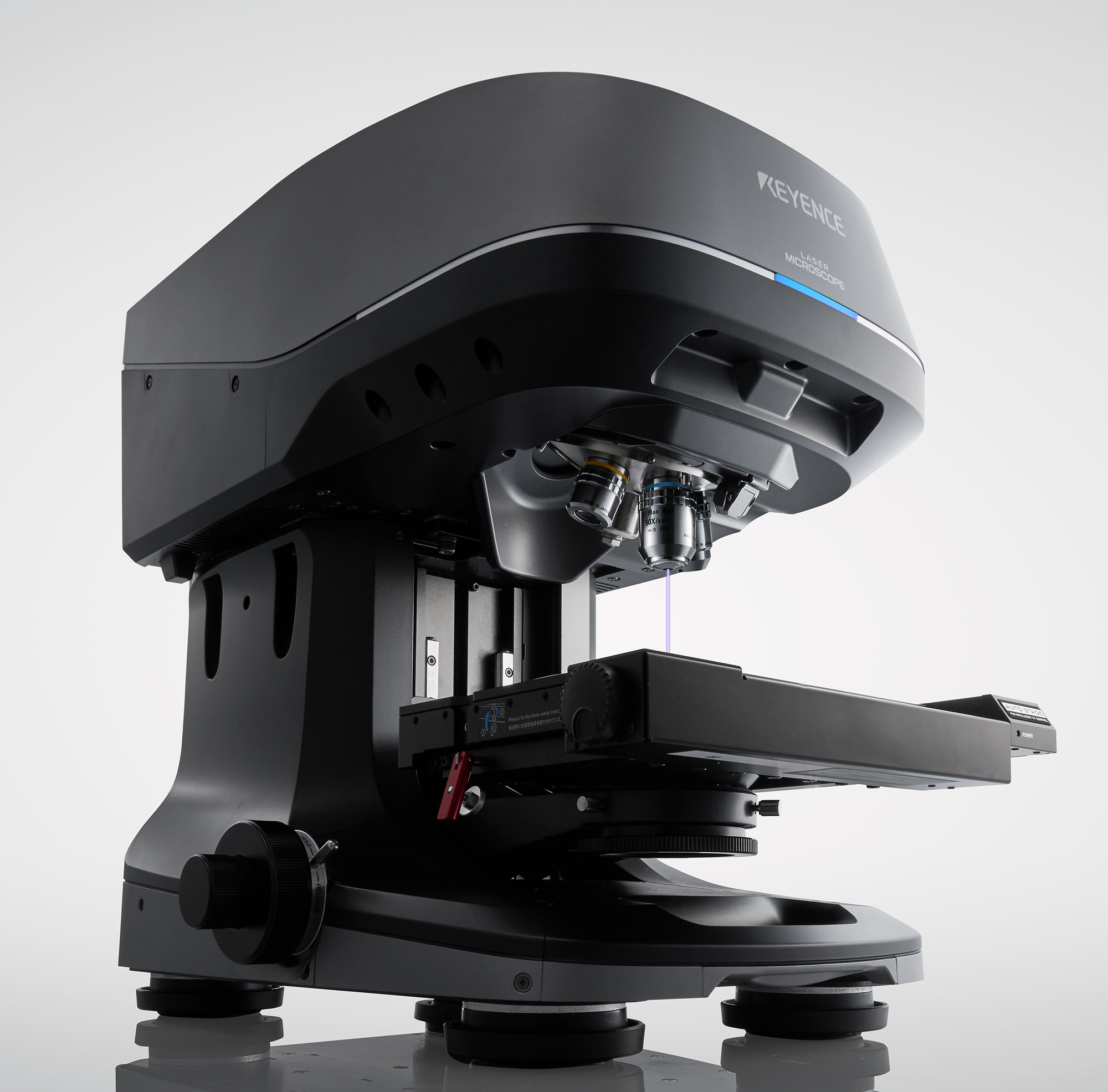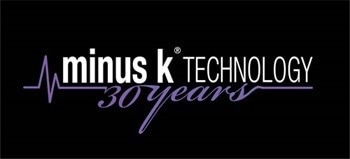Manufacturers need to carefully manage processes to produce a consistent, reliable product. Where precise surface engineering is required, surface measurement can play a key role in maintaining control of the process by checking that the process outputs are not outside of specification.

Image credit: Minus K
3D non-contact surface analysis is used extensively across the industry to measure surface irregularities and small displacements – it provides accurate, traceable and repeatable measurements.
When built into microscopy equipment using 3D laser scanning or structured light, these systems measure the surface conditions of products with more precision than any other method, obtaining nanometer-level profile measurements of angle, width, height, roughness, radius and volume.
Such precise measurement systems allow users to increase product reliability and quality and expand production yields and manufacturing consistency.
Low-Frequency Vibration
When taking measurements of such high precision, any instrument can be negatively impacted by low-frequency vibrations generated within a manufacturing facility. These vibrations can interfere with measurements, affecting imaging and measurement results.
One company that has a great understanding of 3D surface measurements and the manufacturing environment is Keyence Corporation – a leading supplier of measuring systems, sensors, laser markers, machine vision systems and microscopes, worldwide.
We have many customers with high-precision 3D measurement systems operating in high-vibration environments, performing microscopy evaluation at 30,000 times magnification, looking at nanometer-level surface features.
Evan Eltinge, Senior Sales Engineer, Surface Analysis Team, Keyence Corporation of America
“At that level of detail, and in that environment, if measures are taken to reduce vibration it improves the quality of the data. Without proper isolation surface measurements occurring at 3,000 – 5,000 times magnification, vibration could contribute to image blurring and loss of image quality,” continued Eltinge.
Vibration is the result of a multitude of factors within a plant – every structure transmits noise. Within the building itself, forklift trucks, production machinery, the ventilation and heating system, pumps, fans, elevators and compressors are just a few examples of the mechanical devices and equipment that create low-frequency vibration.
Depending on the proximity of the surface measurement instrumentation to these vibration sources and wherein the structure the instrumentation is located – i.e., the production floor or in a loft – will affect how strongly the instrumentation will be impacted.
External sources of vibration that may influence instrumentation include road traffic, truck movement, loud noise from aircraft, nearby construction and even weather conditions such as wind as they cause movement of the structure.

Image credit: Minus K
Vibration Isolation Options for 3D Surface Analysis
Traditional approaches to eradicating vibration from 3D surface analysis each have pros and cons. However, as surface analysis has advanced from micro-level to nanometer-level tolerances, so has the need for greater accuracy in vibration isolation.
Stone Slabs
The ubiquitous, several-hundred-pound granite slabs mounted on metal tables have been critical in supporting and providing a level platform for sensitive instrumentation in manufacturing facilities.
As a passive isolator, these stone slabs do not completely eradicate the vibrations but do significantly reduce the amplitude relative to the mass of the slab.
A two-foot-thick slab weighing 600 pounds can do an acceptable job of reducing low-frequency vibrations for 3D surface analysis. However, there is no portability without moving the slab, meaning the equipment being used to measure parts would have to stay fixed in one location.
Air Vibration Isolation Tables
Air vibration isolation tables are very common devices used in manufacturing for isolating vibration insensitive instrumentation.
Although previously the mainstay for stabilizing the industry’s most critical micro-engineering instrumentation, pneumatic vibration isolation tables are poor isolators of extremely low-frequency vibrations. Such vibrations can negatively affect instrumentation when operating at nanometer-scale resolutions.
Air systems can achieve a level of vibration isolation, usually in one dimension (i.e., vertical), but offer little horizontal isolation. However, they do not provide sufficient isolation needed at very low-resonance frequencies.
Air systems can intensify vibration, rather than lessen vibration, in a range typical of 1.5 – 3 Hz because of the natural frequencies at which air tables resonate.
All isolators amplify at their resonant frequency but will begin to isolate as the frequency increases. With air tables, any vibrations within the resonant frequency range could not only fail to be attenuated but could also be amplified, and low-cycle perturbations will come straight through to the instrumentation.
A power pump is required to supply air to air tables – which itself generates low-frequency vibration – as well as a tank that contains the pressurized air, delivering a steady pressure to the isolator.
Air hoses run from the tank to the vibration-isolating platform. All of this makes for a bulky and complex setup. The large footprint of air tables makes them unsuitable for tight-space laboratories and difficult to transport should the table need to be moved.
Taxing air table functionality is the growing trend of locating highly sensitive instrumentation (e.g., 3D surface measurement systems) in buildings where vibration noise is high – posing an important challenge to vibration isolation.
With more industries moving to highly precise inspection equipment, environments with heavy vibration require more effective vibration isolation solutions than is achievable with air tables.
Active System Electronic Vibration Cancellation
Another vibration isolation option for 3D surface analysis is active vibration isolation systems – also known as electronic force cancellation. These systems use electronics to detect motion and then introduce forces electronically to counteract or prevent the vibrations.
Such systems use a combination of actuators, transducers and sensors, whose function is determined by algorithms to attenuate the vibrations. The sensors detect vibrations and their specific directions (x, y and z). These sensors then transmit this information to a controller, which, in turn, directs the actuators to reduce the sensed vibrations.
Feedback and feed-forward are used to attenuate vibrations in active systems. Feedback control systems continually monitor the platform they are controlling, modifying outputs according to the vibration data retrieved.
In a feedback active-control system, the forces causing the vibrations are first measured. The control system then transmits corrective signals to transducers, reducing the vibrations.
A feed-forward control system reacts in a predefined way to control the input vibrations.
For instance, where the behavior of the controlled forces (vibrations) is well understood, this type of control system is deployed – for example, impulses from stage motions, valves, etc. In a feed-forward system, information about the motion is already known, so the system applies the necessary forces to counter the vibrations.
To obtain precise results in vibration-critical applications, feedback electronic-force cancellation systems must balance the complexity of inertial feedback in response to incoming vibrations. This can present challenges for active systems when the inertial feedback is applied to incoming low-frequency vibrations horizontally.
Active systems cancel out low-frequency vibration well, and their use over the past 25 years has progressively increased.
Some active isolation systems can isolate vibrations from as low as 0.7 Hz. However, other active systems have a limited dynamic range that is easy to exceed. This can cause the isolator to go into positive feedback and begin to generate noise.
Calibrating active isolation can be challenging. However, once the instrument is accurately set up, its performance exceeds the capabilities of air tables when canceling out low-frequency vibration.
Negative-Stiffness Vibration Isolation
Due to its highly effective vibration isolation, particularly at low frequencies, Negative-Stiffness vibration isolation enables highly precise instruments, such as surface analysis microscopes, to continue operating in harsh conditions and severe vibration environments – environments that would otherwise not be practical with top-performance air tables and other vibration-mitigation technologies.
As a result, Negative-Stiffness isolators have seen a rapid increase in use for extremely sensitive, nanometer-level microscopy applications.
Developed by Minus K Technology, Negative-Stiffness isolators use a completely mechanical and unique concept in low-frequency vibration isolation – they do not require compressed air nor electricity.
There are no chambers, pumps or motors, meaning no maintenance is required as there is nothing to wear out. They operate purely in a passive mechanical mode.
In this vibration isolation system, vertical-motion isolation is achieved by a stiff spring that supports a weighted load in combination with a negative stiffness mechanism. The net vertical stiffness is greatly reduced without affecting the static load-supporting capability of the spring.
Beam columns, connected in series with the vertical-motion isolator, achieve horizontal-motion isolation. A beam-column behaves like a spring combined with a negative-stiffness mechanism. This results in a compact passive isolator capable of very high internal structural frequencies and extremely low horizontal and vertical natural frequencies.
The isolator provides 0.5 Hz* isolation performance horizontal and 0.5 Hz vertical, using only a passive mechanical system – no electricity or air is required.
However, it is worth noting that for an isolation system with a 0.5 Hz natural frequency, isolation begins around 0.7 Hz and improves with an increase in the vibration frequency. The natural frequency is most often used to describe the system performance.
Negative-stiffness isolators resonate at 0.5 Hz. At this frequency, there is almost no energy present, and therefore, it is unusual to find a significant vibration at 0.5 Hz. Vibrations with frequencies greater than 0.7 Hz (where negative-stiffness isolators begin isolating) rapidly attenuate with increasing frequency.
With Negative-Stiffness isolators, transmissibility is significantly better than that of air systems. Transmissibility is a measure of the vibrations that are transmitted through the isolator relative to the input vibrations.
The negative-stiffness isolators, once adjusted to 0.5 Hz, achieve 93 % isolation efficiency at 2 Hz, 99 % at 5 Hz and 99.7 % at 10 Hz.
Keyence’s Assessment
Keyence supports the development of an array of factory automation and sensors, machine vision products, as well as microscope and measurement instrumentation for non-contact surface analysis in 3D.
For example, Keyence’s VR-3000 Series – a non-contact 3D measurement system – is capable of measuring wide areas accurately and quickly, measuring roughness, profile, wear volume or flatness, or comparing 3D scan data to CAD files, and diagnosing whether a part is good or bad.

Image credit: Minus K
In addition, Keyence’s VK-X Series 3D laser scanning confocal microscope provides non-contact, nanometer-level roughness, film thickness and profile data on any material and indicates the most vital metrics for evaluation.
The instrumentation products from Keyence are designed to measure at the nanometer scale, meaning in factory environments, where extreme vibration exists, isolation of low-frequency vibrations can be significantly improved.
We have traditionally recommended granite slabs and air tables for vibration isolation. The reality is, they do isolate some of the vibrations, but for customers, in extreme vibration environments we wanted a solution that could provide even better results when doing a nanometer-level evaluation on a surface. So, we have explored other options that would provide a better solution to these low-hertz vibrations.
Evan Eltinge, Senior Sales Engineer, Surface Analysis Team, Keyence Corporation of America
Two of the best options, as identified by Keyence, are Negative-Stiffness vibration isolation and active system electronic vibration cancellation.
“What we have found was essentially, that both active electronic cancellation and Negative-Stiffness technologies have similar levels of vibration isolation,” explained Eltinge. “But there is a big difference in what it takes to set up the systems. Active cancellation systems are more difficult to set up. Whereas, Negative-Stiffness isolators require one quick adjustment and they are ready to go.”
“Our customers value equipment that is easy to use and to operate.” said Eltinge. “They purchase our equipment looking for something that will measure with incredible precision, but, at the same time be simple enough for any operator. To add into this a vibration isolation solution that is challenging to use is taking away from the value of our product. The operational simplicity of the vibration isolation system is, therefore, very important to us.”

This information has been sourced, reviewed, and adapted from materials provided by Minus K Technology.
For more information on this source, please visit Minus K Technology.